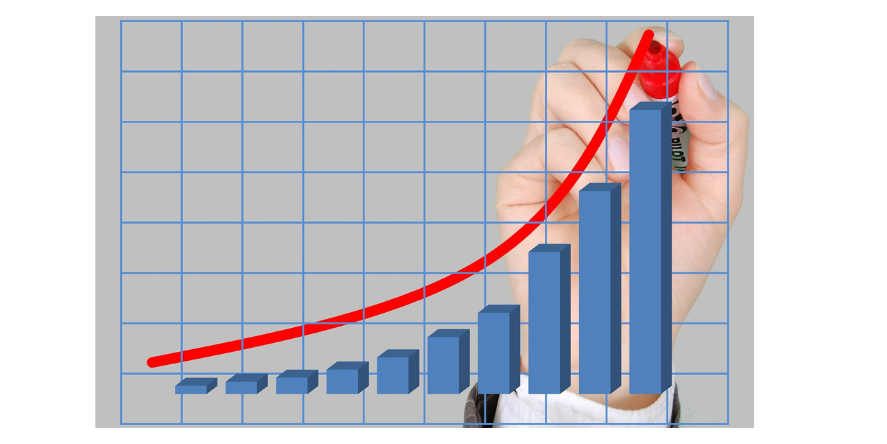To say I’ve been inundated with calls and meeting requests to rebalance portfolios and hedge positions would be an understatement, but is the order of my day or need I say month, especially with BTC dropping sub USD 20k. As an investment manager, having endured the tech crash in 2000, and the global financial crisis in 2008 have seasoned me to believe in my very own investment philosophy which is a blend of traditional and conventional techniques to not only achieve alpha at times but mainly to secure steady growth within the confines of all aspects operating and governing in the financial services industry.

Stock and bond markets move in cyclical phases. Generally, one can expect markets to experience lows when prices fall and peaks when prices surge. Whilst only a select few know more or less when and how much approximately those lows and highs will manifest, one can expect the financial markets and most global economies to eventually bounce back to those levels.
The four stages of a stock market cycle are
- Accumulation occurs after the market has capitulated or bottomed out and investors begin to look for opportunities in cheap valuations.
- Markup occurs after a period of market stability and security prices rise.
- Distribution happens when the majority of activity shifts to sellers as the market reaches a peak.
- A Downtrend transpires when prices begin to fall and the cycle begins anew.
This highlights the importance of constructing and maintaining a diverse properly balanced portfolio versus a highly concentrated non-diversified one, which can more effectively withstand the shock of a market downturn. When financial markets are in turmoil and account balances start to fall, there can be a strong temptation to attempt to do something to stem any perceived losses, and it’s naturally deeply entrenched in human behavior. If you’ve been reacting to the market emotionally given what’s been happening recently, then hey, I hear you. Who wouldn’t be? Let’s be honest with ourselves, it’s painful to watch your portfolio diminish in value. We’re only human.
So human in fact, that on a cellular level, we are biologically programmed to panic in times of market volatility. One part of our brain sounds a biological alarm that floods the body with fear signals when we are losing money. It leads to our emotions getting the best of us – quite literally.
It certainly doesn’t help when media outlets report doom and gloom at every opportunity. Inflation is up! Pending recession! War in Ukraine! Buy! Sell! Due to our heightened sensitivity, we become magnets to negative bias that leads us to react emotionally. In times like these, it’s important to identify the characteristics of fear and challenge it directly.
Separate facts from feeling to make better judgment calls and decisions. Let’s start by looking at the facts. What’s causing the market volatility? To put it simply: The world did not anticipate the impact (or the advent) of the Russia and Ukraine war. The war has put a chokehold on distribution lines of common resources the world uses every day since Russia is the world’s largest exporter of wheat, pig iron, natural gas, and nickel. It also accounts for a significant share of coal, crude oil, and refined aluminum exports. Ukraine, on the other hand, is a key exporter of food commodities such as wheat and sunflower seed oil. The stabilization that Central Banks were looking forward to has been hindered by variables it has no control over. In addition, countries like China are coming back online as the government is reducing restrictions and consumer spending on goods and services will soon increase.
This will likely put more pressure on food and oil prices and cause further price increases. On the one hand, you have Central Banks raising rates in order to reduce demand, thus reducing the cost of living for their people, but on the other hand, the cost of living is increasing due to factors outside of its monetary policy control.
This leaves Central Banks in the precarious position it is in today, and markets are fearful of the near-term prospects, primarily concerned that the Fed will raise rates too high and cause a recession. Expectations are that in the upcoming Fed meeting, Jerome Powell will raise rates anywhere between 50bps and 75bps in the coming week. So, the above has shed light on why we’re in the position we’re in right now. Read it, or don’t, it doesn’t actually affect your next steps. What you should be primarily concerned with is how to navigate the volatility of the market and what actually helps in this situation. Hold your ground and adopt a big-picture perspective.
a)- Periods of market volatility, market corrections, and bear markets are a normal part of investing. Markets do tend to go up over time, but they don’t do so in a straight line. The truism “there is no gain without loss” will always hold true in investing.
b)-Remember the lessons from the financial crisis I learned a decade ago that life goes on. Markets recover. And those who try to time volatile markets often lose out. Investors who kept their heads and their money working during the financial crisis benefitted the most. Apply those lessons now. Don’t panic, stay disciplined, and look for the investment opportunities market lows can present.
c)-Beware of the cognitive biases that aren’t helping Loss aversion theory states that people experience the pain of loss about twice as strong as the pleasure of a gain. This is a reason why we react so strongly when we experience a financial loss. Another concept called anchoring can be detrimental as well. It’s when investors anchor on the highest value their investment portfolio has reached. For example, if your portfolio was at $100,000 in January, and now it’s $85,000, it probably feels like you’ve lost $15,000. Thinking this way ignores the fact that a year ago you started off with $80,000 and 5 years ago it was $30,000. The value of your portfolio is still up compared to when you first started, and the market will likely rise to new highs in the future.
My concern was that the longer the market remained in a tight trading range, the risk of a failed rally increased. While there was certainly room for the market to break to the upside, the multiple levels of resistance immediately overhead limited any advance.
The failed rally now adds additional downward pressure on prices near term. Therefore, from a risk management perspective, we continue to suggest using rallies to reduce exposure and raise cash. Given the failed rally, it is important the retest of the previous lows holds. A break of those lows will confirm the ‘bear market’ is fully engaged.”
Unfortunately, previous support levels did fail to hold, and the market tumbled this week to new lows for the year as the Fed hiked rates by 0.75%, almost ensuring an economic recession.
As noted, the market remains in a very defined downtrend from the January highs. With the market very oversold and pushing 3-standard deviations below the 50-dma, a counter-trend rally within the downtrend is likely. However, given the Fed is tightening policy and the risk of an earnings recession is rising, we continue to suggest using rallies to reduce risk. It is not surprising that we are getting many questions inquiring whether we are near the bottom of the current selloff. Picking the bottom of a bear market is always more luck than skill. However, some technical signals and supports suggest we may be closer to a bottom than not.
One thing to note is that despite the current decline, the markets are still within a correction rather than a bear market. The mainstream media uses an arbitrary measure of a 20% decline to declare a bear market. However, a bear market occurs when prices are no longer trending positively but negatively. If we view the market from 2009 to the present, we can denote the market’s bullish trend compared to the current correction. The 3-year moving average has acted as the bullish trend support since the end of the financial crisis. More importantly, the bullish trend remains intact current from the 2009 lows. Notably, the market is currently more oversold (top and bottom panels) than at the lows of March 2020 or 2009.
With markets still above the 2020 peak, it is hard to suggest we are in a bear market. But with such deep oversold conditions, one could argue there is potential support for markets near term. However, there are essential differences between the current market environment and the previous corrections. At previous market bottoms, as noted by the vertical red lines above, the Fed was cutting rates to zero, introducing QE programs, or providing other measures of monetary liquidity.
Today that is not the case, as the Fed is just starting to reduce its balance sheet and hike interest rates aggressively. The reversal of liquidity suggests that any short-term bottom in stocks may not be “the” bottom, particularly as the economy approaches earnings and economic recessions.
With the market completing a head and shoulders stopping the process and violating important support at the 38.2% Fibonacci retracement level, the next logical support is 3500. Such a correction would wipe out all the gains since the 2020 peak. Such would also push the S&P 500 index nearly 4-standard deviations below the 50-day moving average. If the market fails to find support at 3500, 3196 becomes the next logical level.
However, the market is currently showing several signals aligned with previous market bottoms. Currently, only 2.6% of stocks in the S&P 500 index are trading above their 50-day moving average. Moreover, only 12.4% are above their respective 200-dma. As shown, with the market oversold and so many stocks trading below their respective moving averages, such typically denotes market lows. Furthermore, the market selling as of late has been brutal. As noted by BofA: “More than 90% of stocks in the S&P 500 declined today. It’s the 5th time in the past 7 days. Since 1928, there have been exactly 0 precedents. This is the most overwhelming display of selling in history.”
While none of this data guarantees a market bottom is near, history suggests the odds of a reflexive rally remain elevated. We also suspect Wall Street will call the “Fed Faff” on aggressive monetary policy sooner than later.
The entirety of the financial market currently hinges on the Federal Reserve and its monetary policy outlook. On Wednesday, the Fed hiked the overnight lending rate by 0.75%, citing inflationary pressures. Jerome Powell decided that a “Fed Faff” was the right call to assuage the markets in light of the increase. While the Fed may not see signs of a broader economic slowdown, almost every measure of activity in the economy is slowing. While the “Fed Faff” seemed to work on Wednesday, Wall Street called the Fed pushing stocks below important support on Thursday. The realization that the more aggressive Fed policy increases recession risk led to one of the largest sell programs since the financial crisis. Lastly, given that valuations remain elevated by historical measures, realizing economic recession risks requires further repricing for a coming earnings recession. (Fed rate hikes precede economic slowdowns, recessions, and earnings reversions.)
As noted, while the “Fed Faff” tries to convince markets Powell & Co. has things under control, the Fed needs time to hike rates and reduce its balance sheet before the next recession. In other words, it is a race against time. The most significant risk to the Federal Reserve is financial stability. Such is particularly the case with the entirety of the financial ecosystem now more levered than ever. Over the last decade, the Fed has not had to contend with high inflation making it relatively easy to be more hawkish. However, now, as the market calls the “Fed Faff,” his predicament is much worse. While the Fed may talk a tough game of combating inflation, a recession will take care of that. However, financial instability is a problem that can quickly get out of control with much more significant economic and financial ramifications. Currently, BofA suggests that some 3500 is the point where the Fed pivots to stave off financial instability.
As markets remain under pressure, we continue reducing exposure and rebalancing portfolio risks accordingly. There is no easy measure to navigate markets at the moment, but for those who have never been through a bear market, this is just part of the process. As we discussed realigning perspective is critical in maintaining control in challenging market environments.
Anchoring is a heuristic revealed by behavioral finance that describes the subconscious use of irrelevant information, such as the purchase price of a security, as a fixed reference point (or anchor) for making subsequent decisions about that security. Investors are trained by the financial media to anchor to a fixed point in the market. We measure market performance from the 1st trading day of each year. Or from the peak of an advance.
Yes, the markets are down 20%+ this year but are still up from the previous 2020 peak. Most investors did not buy the 2020 bottom or sell the 2022 peak. These anchor points provide little perspective for the average investor regarding where they are relative to their financial goals. However, these anchors, tied to constant media updates, feed our emotional decision-making processes driven by greed or fear. Those emotionally driven decisions always lead to the worst possible outcomes. I suggest using any rallies to reduce risk and increase cash levels further until the market provides better clarity. There will be plenty of time to determine if and when the current bearish cycle is over. We remain pretty confident we are not at that point just yet. We are all going to make bad choices from time to time. The goal is to try and make bad choices that don’t have an outsized effect on our plan. When it comes to dieting, if you eat a burger, order it without cheese and mayonnaise. When it comes to your portfolio, if you make speculative bets, do it in smaller sizes. Or, if you are leaning towards panic selling everything, start by selling some but not all of your holdings.
Importantly, keep your market perspective in check and ensure you aren’t anchoring to something that will lead to poor decisions over time. More importantly, if you don’t have an investment strategy and discipline you are stringently following, that is an ideal place to begin.
Blog By: – Geoffrey Muns

Geoffrey Muns is an Independent Financial Advisor and Planner certified from the UK, US, and UAE based out of Dubai for the past 25 years. He also works in the PE/VC space and is a seasoned investment banker having worked with international banks and investment firms in the region. You may contact him at 1mgicapital@gmail.com
The blog received on Mail





















